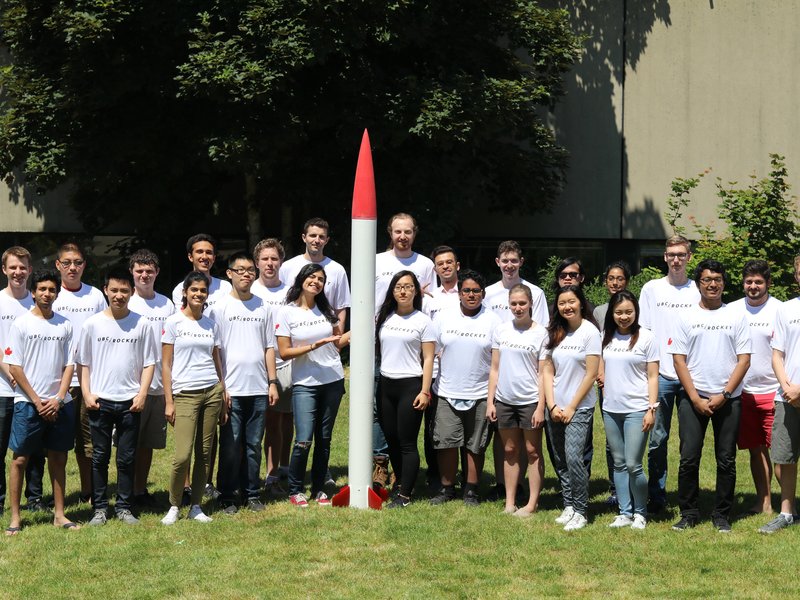
A year ago, there was no UBC Rocket team. Now at 60 members strong, they are competing for the first time at the Spaceport American Cup in Las Cruces, New Mexico from June 20 to 24.
The Spaceport American Cup started as a partnership between the Experimental Sounding Rocket Association and Spaceport America, a commercial rocket-launching base, to provide an opportunity for the next generation of aerospace scientists and engineers to collaborate and compete.
This year, the rocket engineering competition will welcome 110 student teams from around the world to launch rockets to altitudes of 10,000 and 30,000 feet. One of these rockets will be UBC Rocket’s very own Cypress, named after the West Vancouver mountains and provincial park.
Simon Bambey and Joren Jackson, the team’s co-founders and captains, are passionate about space technology and aerospace engineering. As pilots with the Canadian Air Cadets and engineering students at UBC, Bambey and Jackson are ready to take their passion to the next level: all the way to suborbital space.
“The competition is an awesome opportunity for a team like ours with no real official rocketry experience to have a framework to get a lot of experience to build a high-powered rocket and launch it in a safe way,” said Jackson.
The competition provided students with a set of regulations and criteria, which the captains used to begin their planning process. The competition also provided the team with a deadline which motivated members to create realistic timelines for building Cypress.
They say a rocket isn’t built in a day
With the goal of getting Cypress to an altitude of 10,000 feet, Bambey and Jackson had their hands full, and they started as all team captains do: they recruited and planned.
“When the captains were looking for people, they looked for people who were interested, not necessarily who had a lot of experience — students who were passionate and interested in learning,” said Lauren Lee, a first-year engineering student who is part of UBC Rocket’s organization development team.
Their open and welcoming recruitment approach led to a diverse team of students from different years and different faculties including engineering, science and business. The students were then split into different sub-teams with each sub-team taking on a crucial aspect of the rocket.
The aerostructures team designed and built Cypress’ body, all the way from the fins at the rocket’s base to its signature red nose cone. The team also chose and integrated the rocket’s propulsion system.
The avionics and recovery team developed Cypress’ control system to accurately detect the rocket’s position and the software to analyze data collected during the flight. This team was also tasked with developing the system to safely return the rocket to the ground after it reaches its highest point.
The integration of the payloads into the rocket were led by a specific team as well. Payloads are the materials and systems that a rocket takes up with it which vary depending on the rocket’s mission. Cypress will be taking up multiple payloads, one of which is a system to assess air quality and detect the ozone boundary layer.
Rocket science is team science
When the team came together, no one had any real rocketry experience. Less than a year later, any member of the team can explain the complexities of making rocket go up 10,000 feet.


